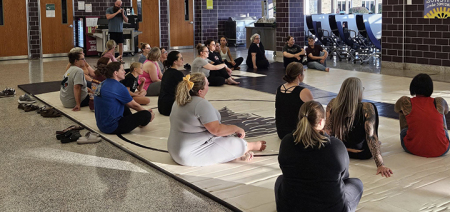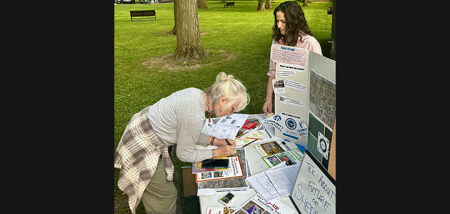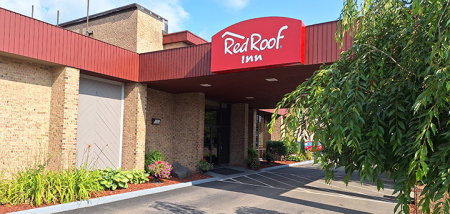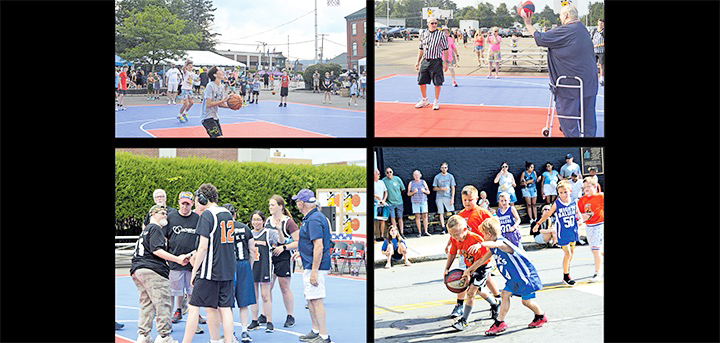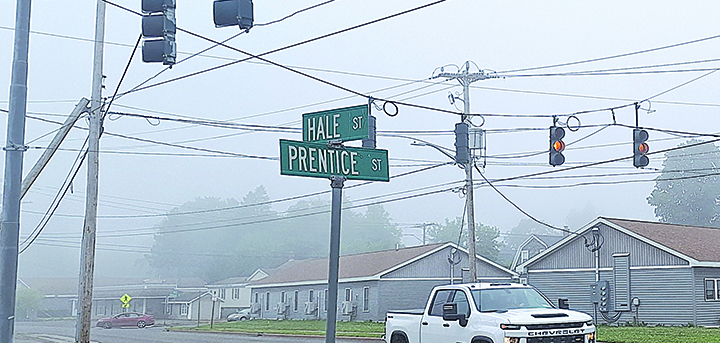Coyote Hunting Season Is Open Until Late March
Published:
March 9th, 2017
CHENANGO COUNTY – The eastern coyote is considered to be more difficult to hunt than the western coyote because they live in denser cover, compared to the open prairies and grasslands. This allows them to circle downwind in the woods or brush, as they almost always do, to catch your scent without ever being in a position to present you a clean shot.
So in order to be successful at hunting the eastern coyote you need to do a little more preparing for your hunt than you might want to admit. You have to look at wind direction and speed, where you're anticipating them to approach from, where you're shooting lanes will be, what calls might be effective, and more.
Operating a hand call can keep you from getting too bored, and it is satisfying to know that you can make the call sound so real that it fooled a wary coyote into coming in to investigate.
While hand calls are cheaper, electronic calls can be the ticket especially with eastern coyotes. Being able to place the speaker upwind about 150-200 yards, you can anticipate that any coyotes approaching will come downwind to smell it out and could present you with a shot much closer than you would have using hand calls.
It also allows you to be hands-free so you can be on the look out for a sneaky coyote with your firearm ready. This results in less movement than trying to put your call down and get your firearm up.
One can also pre-program your caller to have a sequence of calls with periods of silence in between.
The time of year when you are hunting can influence what calls you use. Early in the season prey-in-distress calls, such as fawns or rabbits, will typically produce better. In late January into February, the coyote breeding season starts and coyote vocalizations start to become effective. Think of spring turkey season when you imitate a female looking for a male, or the deer rut when sounding like a male intruding onto someone else’s territory can bring a big boy in looking for a fight.
While coyotes can be called in during daylight hours, night is when coyotes are most active. In order to hunt them at night you will need to invest in a high-powered light, like a spotlight. When you do this, you want to also get a filter for the light so that it is not pure white. Red is the most popular lens filter, then green, and finally amber. Pure white light is visible light and will alert the coyotes to your position.
Since coyotes are prominently nocturnal animals, their eyesight is focused more on the ultraviolet end of the light spectrum (think blues, purples) than on the infrared end (reds, oranges, yellow). This is how a red light doesn’t spook them as much. It is a good idea not to focus the main beam on the coyote as it comes in, but rather use the “halo” of the edge of the light beam as it is less intense.
Slowly scan the horizon every 30 seconds to a minute while calling. You could also invest in a scope-mounted light if using a scoped firearm. They typically have a pressure switch you can place on the forearm to turn the light on with just a quick push of the button. This allows you to operate the light hands-free while you handle the firearm to get prepared to take the shot. When hunting at night, make sure you know what animal it is in your light. A pair of glowing eyeballs isn’t enough to say it’s a coyote. Then make sure you know what’s beyond your target, some daylight scouting can help with this.
What firearm you plan to use can also influence your hunting game plan. The thicker cover of the east allows you to have coyotes get fairly close and allows you to use a shotgun loaded with buckshot.
By investing in a quality choke tube and some premium ammunition you could push 60 and 70 yard shots while being lethal. If you want to focus on more open areas, a rifle will be the ticket. If you plan to try to keep the pelt of any coyotes you shoot for either yourself or to sell, you want to stick to a small caliber, such as the .223 or .22-250. A full metal jacket bullet won’t expand upon entry and will leave a small exit wound and smaller hole in the pelt when you try to sell it.
You may have to track it this way. Polymer tipped bullets open rapidly and cause massive damage but can result in pretty big exit wounds and less money for the pelt. Your deer rifle can work as a makeshift coyote rifle but larger bullets mean larger holes in pelts, but it’s cheaper than buying another rifle.
Wearing full camouflage is recommended as coyotes’ eyesight is very good. This includes a face mask and gloves. They can pick up on small amounts of movement since they spend a lot of time picking mice out of thick grass for food. When there is snow on the ground, wear snow camouflage. This keeps you from being a huge dark blob in the white snow if you plan on sitting somewhat in the open. If you plan to stay in thick cover or around tree trunks, regular camouflage will work.
A reminder that coyote season is open until March 26, in New York State. Hopefully, the ideas presented in this article can help you become a better coyote hunter.
– Submitted by Mayhood's Sporting Goods
Comments

